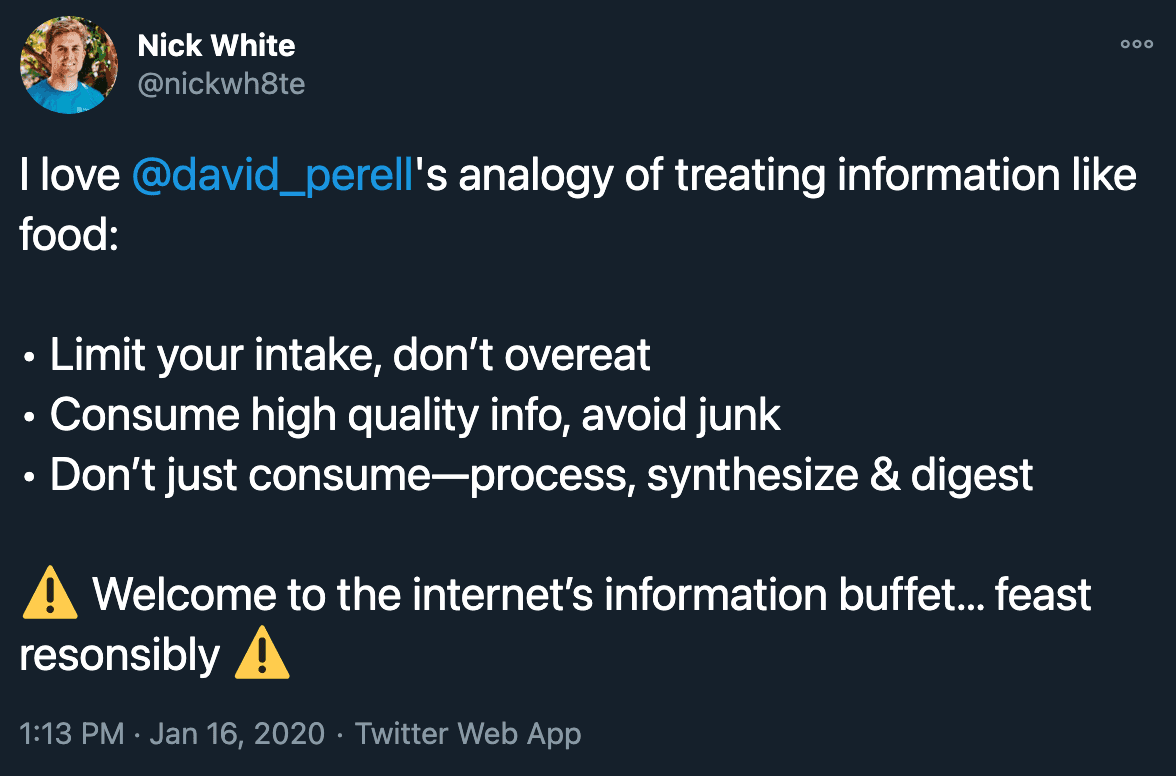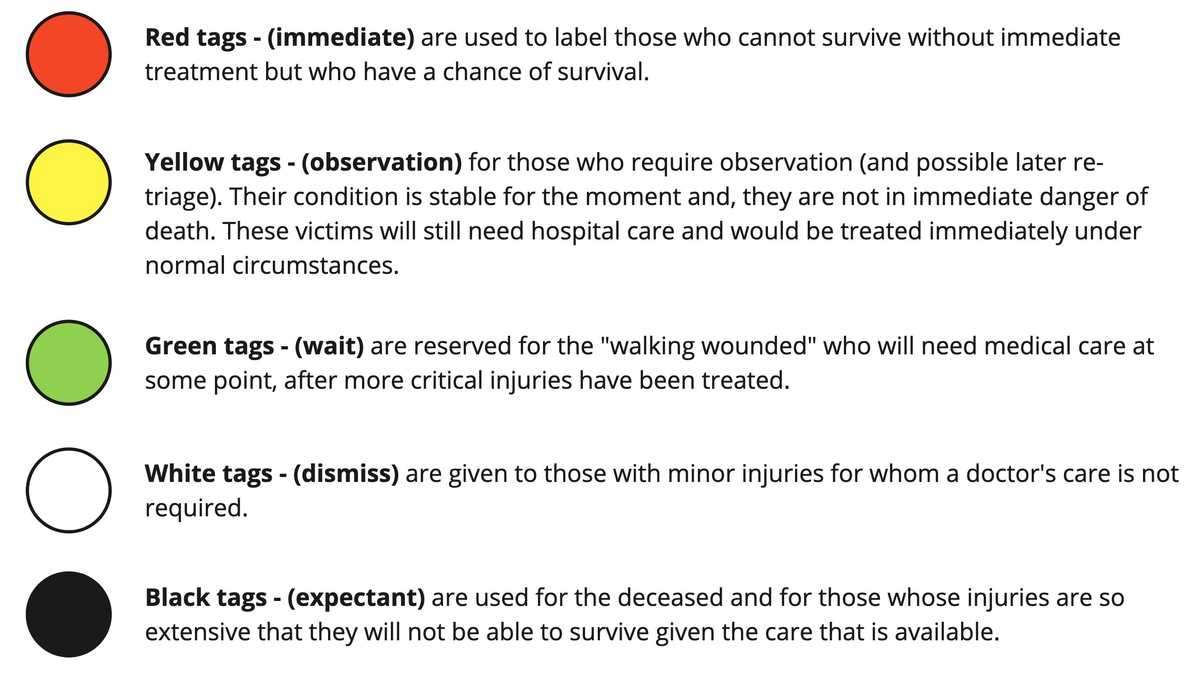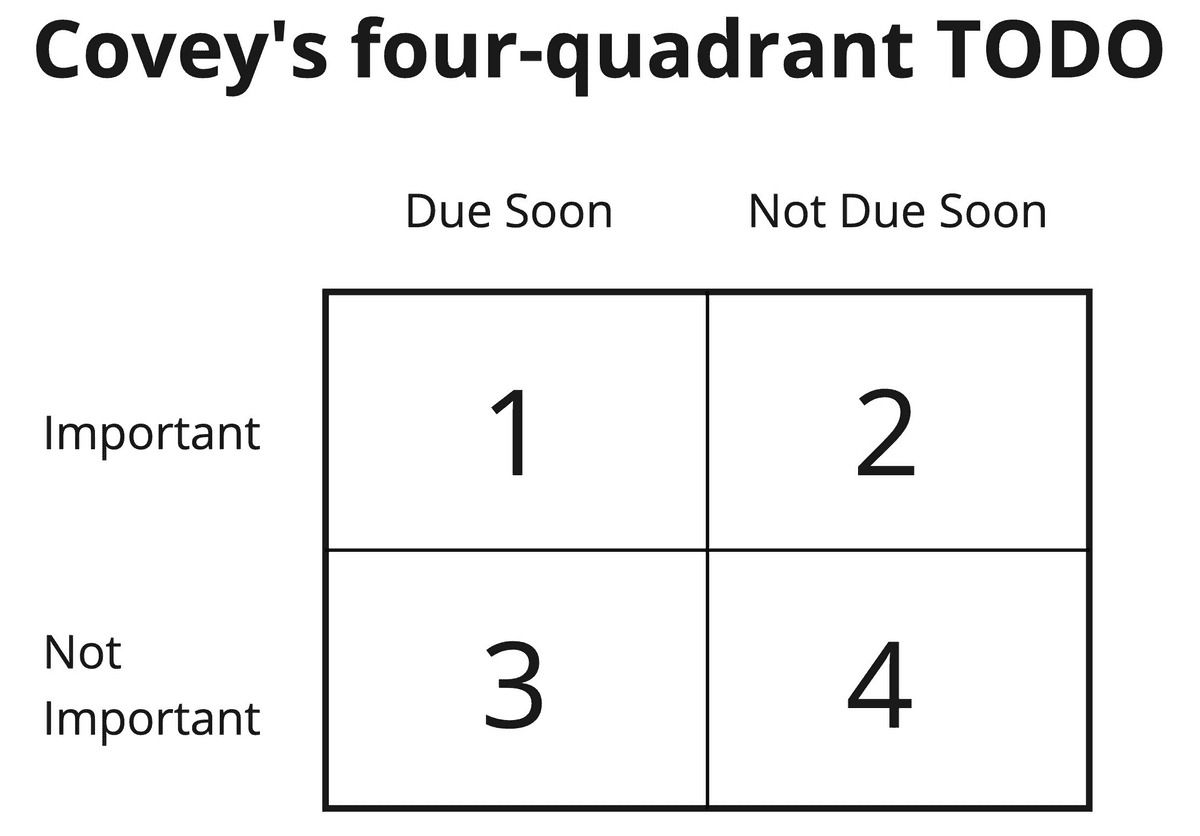Just as patients are triaged in a hospital, information that you consume should also be triaged. When you come across an article/paper/book that you like, save it. Then after some time (to settle any infatuation), triage the source and only if it meets a threshold, commit to it.
We live in the age of information. Every day we consume all sorts of information. We read emails sent to us by co-workers, watch videos explaining how proteins fold, read Paul Graham’s essays, try new products, read Tweets, papers, the news and the list just goes on.
In the internet's information buffet, we should feast responsibly:

A technique we can borrow from health care to limit our intake and consume high-quality information is triaging.
In health care, triaging is the procedure of assigning priority levels to tasks or individuals to determine the most effective order to treat them. Triaging is crucial to determine the urgency of patients' treatments; patients requiring immediate care must be served first.
This priority is determined by the severity of their condition and the likelihood of their recovery with or without treatment. Triaging is usually performed in the emergency department, in the aptly named "triage room", as well as in urgent care at the bedside.
There are numerous different systems for triaging, but the simple ones first check vital signs and obtain a brief medical history; using this assessment, each individual is assigned an acuity score. In disasters for example, a colour-coding scheme has been developed to allow doctors to easily identify which patients to care for next:

The term "triage" was first used in the 1930s to refer to the process of prioritizing the treatment of wounded soldiers in battle. Since then, this same procedure has been adopted in many dissimilar places:
- IT operation departments constantly triage issues to decide which problems to work on first.
- In agile software development, requirements are triaged and each ticket assigned a priority.
- Professionals who receive tons of emails generally have at least a rudimentary email triage system, such as giving each email a colour coded label and priority level.
- Task management systems are used to triage daily tasks by people in all fields.
Likewise, we should also be strategic with the information we consume online. Information triaging is the procedure of gathering, sorting, and prioritizing information to determine the most effective order to consume it.
Here triaging is important because of our limited resources: time and brain bandwidth. Information triaging is a continuous process of refinement where we iteratively pay more attention to the information that is relevant and valuable.
My process for triaging is simple:
- Every time I come across a link (article, product, paper, book, video), I give it a quick skim. But, don't fully consume it then!
- I bookmark it. (initial binary triage: "Should I bookmark it?")
- I place it in an existing bookmark folder or keep it in a “general” pool.
- The highest priority item is at the bottom, and the priority decreases up the list.
- You could also save it in your note-taking system for a later date. There are also lots of tools to help you with this.
- After some time, I revisit the bookmark. If it still seems worth consuming, I consume it!
- (second binary triage: "Should I read this right now?")
Through this process, I've found that many of the bookmarked articles have lost their perceived value by the time I come back to them. In these cases, the initial infatuation was providing a false sense of importance to this low-priority or low-quality item. These "triage deaths" are fine; with online content, you can always1 bring your bookmark back into your "triage room".
Triaging is not a static technique. If the condition of a patient changes in the waiting room, their priority is reassessed by the medical staff. Similarly, if you read your first Bret Victor article and find it superb, you may want to increase the priority of similar links from that domain.
This process of information triaging allows me to have clarity of thought by preventing interruptions by spontaneous content while ensuring that when I do consume content, I am only following quality leads. The other upside is that when I want to take an online stroll or wander, I have a pool of bookmarks that I can randomly pick from. I've had plentiful serendipitous interactions by curating such an information pool.
The proverbial saying “You are what you eat” can be extended to “You are what you read”, and so it is imperative to consume responsibly. Triaging is just one technique you can use!
Thanks to Curtis Chong, Dhruv Patel, Landon Fuhr, and Vidhi Patel for reading drafts of this.
If the link is dead, try using the Wayback Machine - Internet Archive. ↩︎
